A look at 5 ways to increase biodiversity in urban landscapes and embrace nature into our designs. Biodiversity — the diversity of life in a habitat or ecosystem — is a sure sign of the health of that habitat or ecosystem. A diverse array of bacteria, insects, birds, mammals etc. makes a system more robust and able to withstand stress. Diversity, in this case, has a few layers; the number of varied species within an ecosystem, the number of individuals within a species and genetic diversity within the species (Rottle & Yocom). It means more than having lots of butterflies in the garden in spring; healthy biodiversity affects everything from the number of bees and pollinating birds, to compost-eating bacteria cycling nutrients, to having enough bats consuming metric tons of crop-eating insects. With urban areas predicted to triple in size by 2030 and natural habitats declining, it stands to reason that if urbanites don’t want ecological robustness to decline as well, biodiversity must be designed into urban landscapes. What’s in This Article:
- Provide Wildlife Corridors and Connections Between Green Spaces
- Use Organic Maintenance Methods and Cut Back On Lawns
- Use a Native Plant Palette and Plant Appropriately
- Utilize Existing Green Space Connections
- Be Mindful of Non-Native Predators

Urban areas predicted to triple in size by 2030. Image: Printscreen source
Here are 5 Ways to Increase Biodiversity in Urban Landscapes
1. Provide Wildlife Corridors and Connections Between Green Spaces
Providing options for wildlife to travel and find new food sources, water sources, and mates are extremely important to urban biodiversity. The hedgerow in England, for example, has been a part of the English Garden aesthetic for many hundreds of years. The bush or shrubbery provides a physical barrier for larger animals and people but allows for small animals to pass under, through, or along the roots of the hedgerow from garden to garden. Recently, though, with the increase in popularity of impassable fences lining garden boundaries, hedgehog populations in England have drastically dropped.
More Top Articles on LAN
- 10 of the Most Common Mistakes People Make in Planting Design and How to Avoid Them
- Interested But Not Confident? – Know How to be Good at Hand Drawings
- Top 10 YouTube Tutorials for Technical Drawing
Using “soft engineering” techniques such as rain gardens and bioswales to handle stormwater is a good way to provide wildlife corridors. Native grasses, shrubs, and trees are most likely to thrive in rain gardens, which are relatively barrier-free. They also keep the wildlife out of the street and out from under tires.
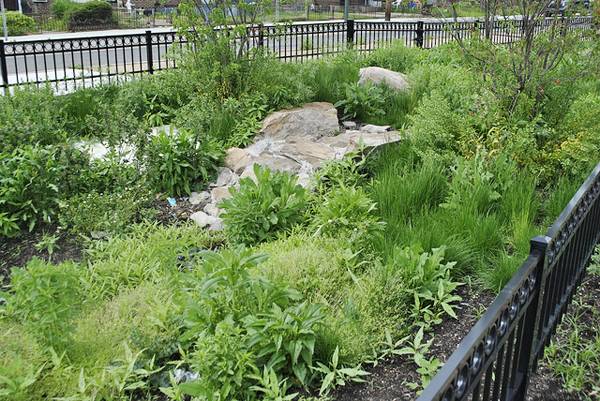
Swale and Rain Garden in Traffic Triangle, near Bartrams Garden. Credit: Philadelphia Water Department, CC 2.0
2. Use Organic Maintenance Methods and Cut Back On Lawns
Urban biodiversity can be supported by avoiding chemical fertilizers and pesticides that are not picky and can’t tell the difference between good bugs and the bad. Bees, in particular, can be sensitive to pesticides, both organic, and chemical. Also, a shorn lawn doesn’t provide food or shelter for most wildlife, even down to the bacterial level if pesticides are liberally applied. More reasons to stop designing lawns can be found here.

Featured image in our hit article 8 Reasons to Stop Designing Lawns — and 2 Reasons to Keep Designing Them
3. Use a Native Plant Palette and Plant Appropriately
The locations of cities are not random; spaces were chosen for future urbanity for the same reason that many plants and animals colonized them first; proximity to the ocean, estuaries, major rivers, and land with enough nutrients to support diverse plant life. Because of this pre-existing relationship with the land, it’s easier to support those same species even now long after the estuary was dredged and the river straightened. With bones of a native ecosystem still buried under the concrete it’s easier to bring that system back to (certainly modified) life. Generally, planting natives is the best way to support a habitat’s natural wildlife because the birds and bugs are already built to eat and use them. Choosing location-appropriate plants ties into the fundamentals of good planting design. Though planting just natives alone won’t necessarily increase biodiversity to its fullest potential. It’s important to have an idea of how many and what kinds of species can be supported, as well as how many benefits a plant offers to the ecosystem. For example, a University of Delaware tree ranking found that native oaks support more than 500 different species of insects, while Gingko, a common choice for street trees, only supports three.
4. Utilize Existing Green Space Connections
Incorporating existing forest, wetlands, and even water retention ponds within a site or nearby space that likely already supports wildlife is a great jumping-off point for discovering what kind of diversity you should design for. The design team for Clos Layat Park in Lyon, France, did just this when incorporating an existing forest into the south side of its plan by continuing the forest into the park. They also included a meadow and dedicated a part of the park to a pollinator garden.
5. Be Mindful of Non-Native Predators
Housecats alone are responsible for between 1.4 billion and 3.7 billion songbird deaths each year. When designing in residential neighborhoods, keep in mind not just the problems local wildlife have in terms of habitat and food availability, but how likely it is that they will become food for non-native predators. Designing for biodiversity makes wildlife your client, and designing a space that lures your client to its death is a no-go. – Biodiversity in urban areas includes much more than rats and pigeons; we can decide how supportive to different kinds of life our urban spaces are rather than grudgingly accepting only the most adaptable species. What kinds of life would you like to see planned for in urban landscapes? How would it affect the way urbanity is planned? On what scale would you like to see it supported?
Recommended Reading
- Landscape Architecture: An Introduction by Robert Holden
- Landscape Architecture, Fifth Edition: A Manual of Environmental Planning and Design by Barry Starke
Article by Caitlin Lockhart Return to Homepage
Published in Blog


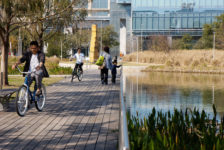
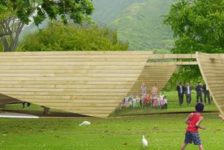
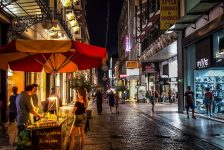
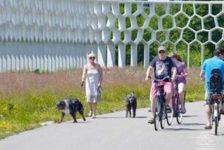
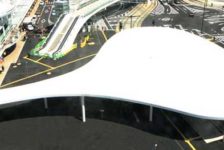
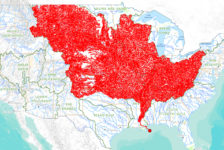
Pingback: Weekly Roundup (July 30) - IOTA Designer Planters